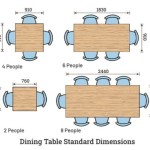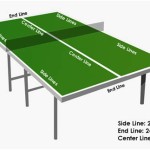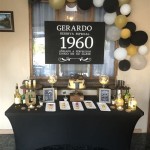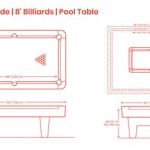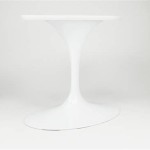How to Properly Set Cutlery on a Dining Table
Setting a table correctly is a fundamental aspect of dining etiquette, reflecting an understanding of refined hospitality and enhancing the overall dining experience. The placement of cutlery, often referred to as silverware, plays a crucial role in this process, guiding guests in navigating the meal with ease and signaling the intended formality of the occasion. Understanding the different table setting styles and the proper placement of each utensil is essential for both formal and informal gatherings.
The specific cutlery used and its arrangement will vary depending on the menu and the formality of the event. A simple breakfast setting will differ considerably from an elaborate multi-course dinner. However, some underlying principles remain consistent, ensuring a functional and aesthetically pleasing table arrangement. This article provides a comprehensive guide to properly placing cutlery on a dining table, covering various settings and addressing common considerations.
Understanding Basic Cutlery Placement Principles
Several fundamental principles govern the placement of cutlery. Adhering to these guidelines ensures clarity and functionality for diners.
Firstly, cutlery is generally placed in the order of use, working from the outside in. This means the utensils for the first course are positioned furthest from the plate, with each subsequent course's cutlery placed progressively closer. This intuitive arrangement allows diners to easily select the appropriate utensil as the meal progresses.
Secondly, forks are traditionally placed to the left of the plate, while knives and spoons are placed on the right. This convention stems from historical practices related to right-handed dominance in Western cultures. The knife, used for cutting, is positioned on the right, aligning with the hand used to hold it. Similarly, the spoon, used for scooping, is also placed on the right. The fork, used for securing food while cutting and for bringing food to the mouth, is placed on the left.
Thirdly, the blades of knives should always face the plate. This subtle detail is considered a matter of good etiquette and is believed to have originated to prevent accidental cuts or damage to the table linen. It also presents a more refined and less aggressive appearance.
Fourthly, the placement of cutlery should be balanced and visually appealing. Utensils should be aligned with the bottom of the plate and spaced evenly apart. This creates a sense of order and harmony on the table, contributing to the overall dining experience.
Finally, only the cutlery needed for the served courses should be placed on the table. Overcrowding the table with unnecessary utensils can be confusing and overwhelming for guests. If a course does not require a specific utensil, it should not be included in the table setting. Additional cutlery can be brought out with the course it is intended for.
Formal Table Setting and Cutlery Arrangement
A formal table setting is characterized by its meticulous attention to detail and adherence to traditional etiquette. It is typically used for elaborate dinners, banquets, and other special occasions where a high degree of formality is desired.
The centerpiece of a formal table is the charger plate, also known as a service plate, which sits beneath the dinner plate. It is solely for decorative purposes and is removed after the appetizer course. To the left of the charger plate are the forks. The salad fork, smaller than the dinner fork, is placed furthest to the left, followed by the dinner fork. If a fish course is included, a fish fork, identifiable by its wider tines and notched edge, is placed to the left of the salad fork.
To the right of the charger plate are the knives. The dinner knife is placed closest to the plate, with the blade facing inward. If a fish course is served, a fish knife, which is blunt and often shaped like a trowel, is placed to the right of the dinner knife. A soup spoon, with its rounded bowl, is placed to the right of the knives.
Above the charger plate are the dessert utensils. A dessert spoon and dessert fork are typically placed horizontally. The dessert spoon is placed above the dessert fork, with its handle facing to the right. The dessert fork is placed beneath the spoon, with its handle facing to the left. This arrangement allows guests to easily access these utensils when the dessert course is served.
A butter knife is placed horizontally on the bread plate, which is positioned to the upper left of the place setting. The blade of the butter knife should face the diner. The water glass is placed above the knives, and wine glasses are arranged to the right of the water glass, typically in order of use. A napkin is often placed to the left of the forks or on the charger plate.
Informal Table Setting and Cutlery Arrangement
An informal table setting is more relaxed and streamlined than a formal setting. It is suitable for everyday meals, casual gatherings, and less formal occasions. The focus is on functionality and ease of use, while still maintaining a sense of order and presentation.
In an informal setting, a charger plate is typically not used. The dinner plate serves as the base of the place setting. To the left of the dinner plate, the fork is placed. If a salad is served before the main course, a salad fork may be included to the left of the dinner fork, although often a single fork will suffice. To the right of the dinner plate, the knife is placed, with the blade facing inward. A spoon, if needed for soup or another course, is placed to the right of the knife.
Dessert cutlery is generally not placed on the table at the beginning of the meal in an informal setting. Instead, it is brought out with the dessert course. A water glass is placed above the knife, and a single wine glass may be included if wine is being served. The napkin can be placed to the left of the fork, on the plate, or in a napkin ring.
The informal table setting prioritizes simplicity and practicality. The arrangement is less elaborate than a formal setting, but it still provides a functional and aesthetically pleasing dining experience. The number of utensils is kept to a minimum, reflecting the courses being served and the casual nature of the occasion.
Specialized Cutlery and Their Placement
Certain specialized types of cutlery are used for specific dishes or courses. Understanding the purpose and placement of these utensils is important for creating a complete and functional table setting.
As previously mentioned, a fish fork and fish knife are used for fish courses. The fish fork has wider tines and a notched edge, designed to separate the fish from the bones. The fish knife is blunt and often shaped like a trowel, used for gently separating the fish without cutting it. These utensils are placed according to the order of courses, with the fish fork to the left of the other forks and the fish knife to the right of the other knives.
Oyster forks are small, three-tined forks used for eating oysters and other shellfish. They are typically placed to the right of the spoons, as they are often used as the last utensil on the right side of the place setting.
Steak knives, with their serrated blades, are designed for cutting through tougher cuts of meat. They are often used in informal settings and are placed to the right of the dinner knife if steak is being served.
Soup spoons come in various shapes and sizes. Cream soup spoons have rounded bowls, while bouillon spoons have smaller, more delicate bowls. These spoons are placed to the right of the knives or as the outermost utensil if soup is the first course.
Dessert spoons and forks can also vary in design. Some dessert forks have a wider left tine, which can be used for cutting softer desserts. These utensils are typically placed horizontally above the plate or brought out with the dessert course.
Understanding the purpose and placement of specialized cutlery enhances the dining experience by providing diners with the appropriate tools for each course. It also demonstrates a refined attention to detail and a commitment to providing a complete and thoughtful dining experience.

Proper Table Setting 101 Everything You Need To Know Emily Post

How To Arrange The Cutlery On A Dining Table Etiquette Dinner Setting
How To Set A Table Place Setting Guide Robert Welch Designs Ltd
How To Set A Table Place Setting Guide Robert Welch Designs Ltd

Proper Table Setting 101 Everything You Need To Know Emily Post

How To Set A Table 3 Ways The Home Depot

Proper Table Setting 101 Everything You Need To Know Emily Post

How To Set The Table For Any Occasion Grain Frame

How To Set A Formal Dinner Table According Etiquette Experts Setting

The Best Table Setting Guide Dining Etiquette Dinner
Related Posts



